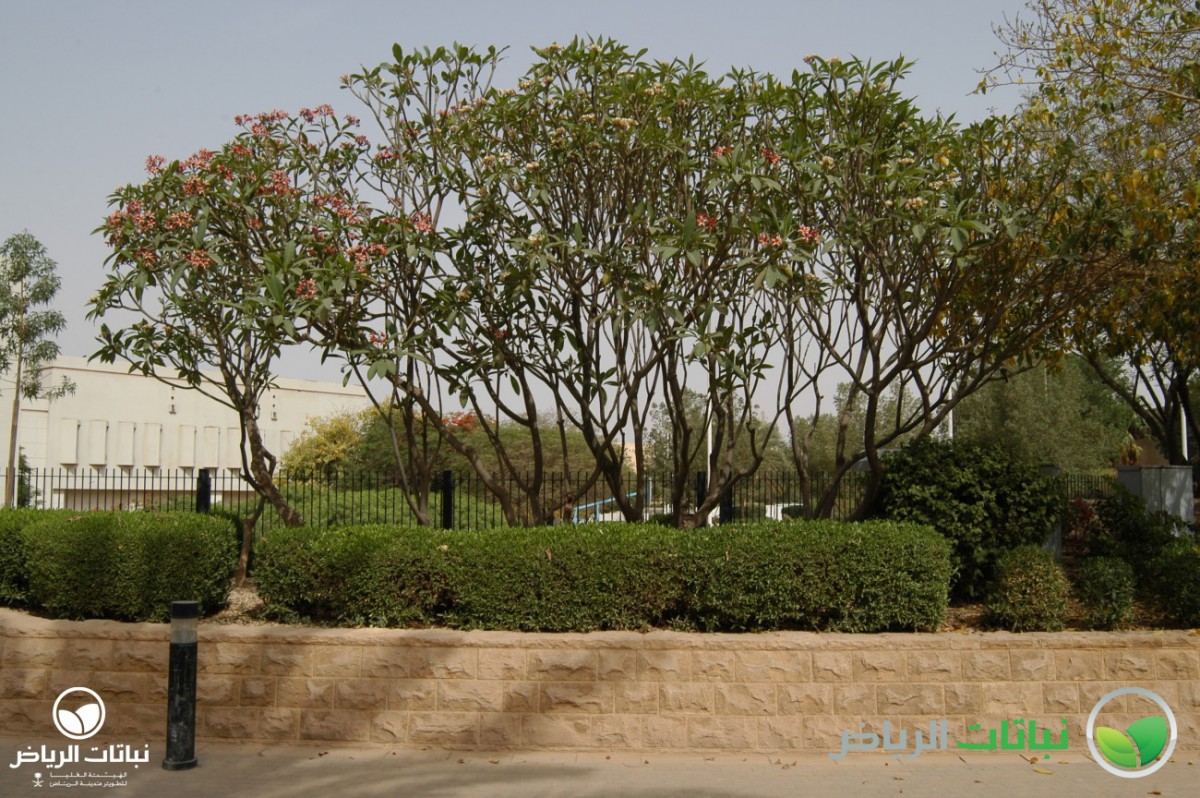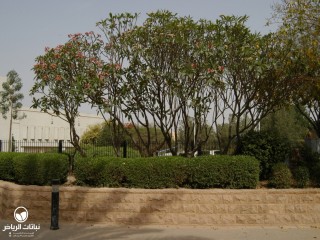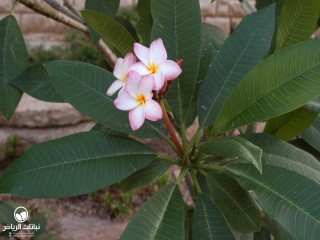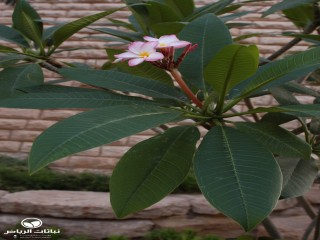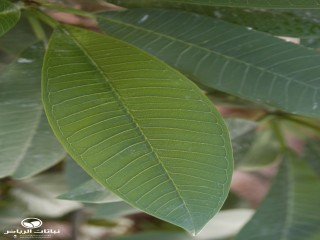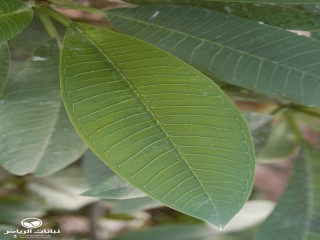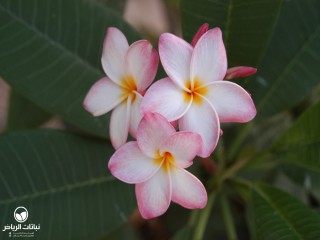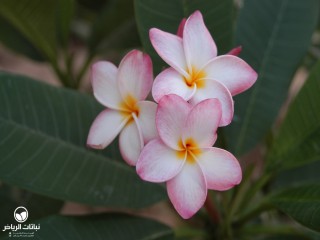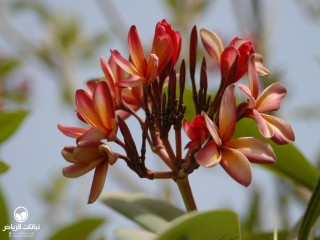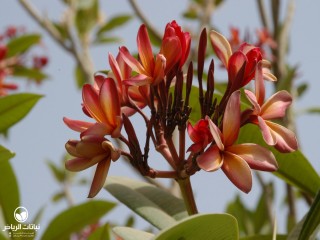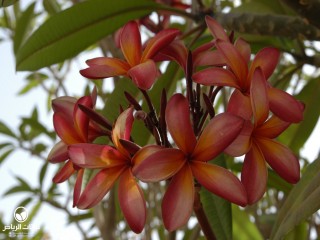Riyadh Plants
Frangipani
Frangipani thrives in high temperatures and high air humidity. It originates in central America, including the West Indies. Usually grown as shrubs, it may also become a multi-trunk tree. Standards require staking over a long period until the stem is strong enough to bear the heavy crown. Like many other members in the oleander family Apocynaceae, the branches and foliage contain white, toxic latex. The thick, green twigs are spaced widely, but shiny, dark-green leaves still make a dense crown. The leaves are deciduous, alternately arranged and lanceolate. Waxy flowers appear in bunches from June through to October. Their colour may vary: white, pink, yellow or red. They all have an intense scent, for which they received their common name, after the Marquis Muzio Frangipani. Frangipani managed to create a perfume similar to the scent of Plumeria. The shrubs are delicate, and easily damaged by frost in Arriyadh. If they are to embellish an unfavourable site such as a terrace, Frangipani can be grown in pots, so that they can be moved during the coldest months. Frangipani is easily propagated in February and March by hardwood cuttings about 40 cm long. The cut surface must be dried completely to avoid fungal infection. Seedlings take several years to produce flowers for the first time. During the growing season, the plant appreciates plenty of water and fertiliser. Pests such as scale insects and diseases are rarely a problem. Pruning is simple and should be done in February, but the exuded sap may irritate the gardener’s skin.
